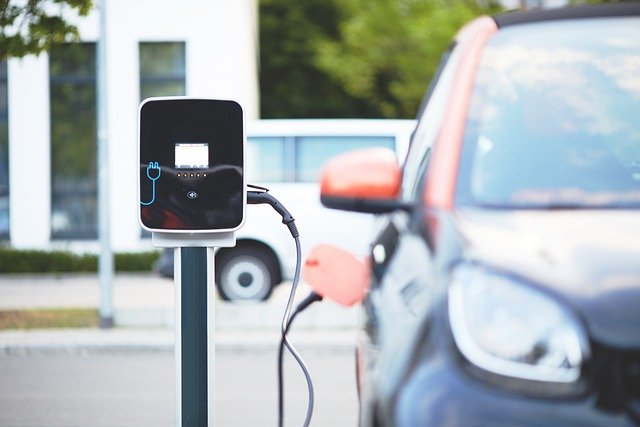The Rise of Electric Vehicle Charging: Powering the Future of Transportation
The automotive landscape is undergoing a significant transformation as electric vehicles (EVs) gain popularity worldwide. With this shift comes the increasing importance of car chargers, essential components in the EV ecosystem. As more drivers embrace electric cars, understanding the various aspects of EV charging becomes crucial for both current and prospective owners.

-
Level 2 Chargers: Operating on 240-volt power, these chargers are significantly faster than Level 1 units. They can fully charge most EVs in 4-8 hours, making them ideal for home and workplace charging. Many public charging stations also use Level 2 chargers.
-
DC Fast Chargers: Also known as Level 3 chargers, these high-powered units can charge an EV to 80% capacity in 30-60 minutes. They’re commonly found at public charging stations and along highways for quick top-ups during long trips.
How does home charging work for electric vehicles?
Home charging is one of the most convenient aspects of EV ownership. Most EV owners charge their vehicles overnight at home, waking up to a fully charged car each morning. To set up home charging:
-
Install a wallbox: This is a dedicated charging unit mounted on your wall, typically in your garage or driveway. Wallboxes are Level 2 chargers that provide faster charging than standard outlets.
-
Electrical assessment: Before installation, have an electrician assess your home’s electrical system to ensure it can handle the additional load of an EV charger.
-
Choose the right charger: Select a wallbox that’s compatible with your EV and meets your charging needs. Some models offer smart features like scheduling and energy monitoring.
-
Professional installation: While some homeowners may be able to install a simple wallbox themselves, it’s generally recommended to have a professional electrician handle the installation to ensure safety and compliance with local codes.
What are the benefits of public charging stations?
While home charging is convenient, public charging stations play a crucial role in supporting EV adoption and extending the range of electric vehicles. Benefits include:
-
Extended travel range: Public chargers allow EV owners to take longer trips, charging their vehicles along the way.
-
Convenience for those without home charging: Apartment dwellers or those without access to home charging can rely on public stations.
-
Emergency power: Public chargers provide a backup option if you forget to charge at home or unexpectedly need more range.
-
Faster charging options: Many public stations offer DC fast charging, allowing for quick top-ups during short stops.
-
Promoting EV adoption: The visibility of public charging stations helps raise awareness and confidence in electric vehicle technology.
How do charging speeds differ between EV charger types?
Charging speeds can vary significantly depending on the type of charger used:
-
Level 1 (120V AC): Adds about 3-5 miles of range per hour of charging.
-
Level 2 (240V AC): Adds about 25-30 miles of range per hour of charging.
-
DC Fast Charging: Can add up to 200-300 miles of range in just 30-60 minutes, depending on the vehicle and charger capacity.
It’s important to note that charging speeds can also be affected by factors such as the vehicle’s battery capacity, current charge level, and ambient temperature.
What factors should you consider when choosing an EV charger?
Selecting the right EV charger involves considering several factors:
-
Charging speed: Determine whether you need a faster Level 2 charger or if a slower Level 1 charger suffices for your daily needs.
-
Compatibility: Ensure the charger is compatible with your specific electric vehicle model.
-
Installation requirements: Consider the electrical capacity of your home and any necessary upgrades.
-
Smart features: Some chargers offer Wi-Fi connectivity, scheduling options, and energy monitoring.
-
Portability: If you frequently travel or move, a portable charger might be beneficial.
-
Weather resistance: For outdoor installation, choose a charger rated for your climate conditions.
-
Cost: Balance the initial investment with long-term savings and convenience.
How is the EV charging infrastructure evolving?
The EV charging infrastructure is rapidly expanding to meet the growing demand for electric vehicles:
-
Government initiatives: Many countries are investing in public charging networks and offering incentives for private charging installations.
-
Private sector involvement: Companies are installing chargers at workplaces, shopping centers, and other public locations.
-
Innovative technologies: Wireless charging and ultra-fast charging technologies are being developed to make EV charging more convenient and efficient.
-
Grid integration: Smart charging systems are being implemented to balance electricity demand and optimize grid stability.
-
Standardization efforts: Industry players are working towards standardizing charging connectors and protocols to improve interoperability.
As electric vehicles continue to gain traction, the charging infrastructure will play a crucial role in supporting widespread adoption. From convenient home charging solutions to an expanding network of public stations, EV chargers are powering the future of transportation, making electric mobility more accessible and practical for drivers worldwide.





